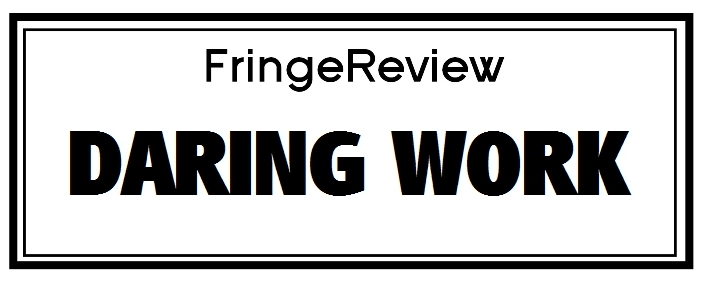Brighton Fringe 2024
J’ai un Bleu
WOMANEWER

Genre: Community Theatre, Dance, Dance and Movement Theatre, Devised, Experimental Art, Movement, Physical Theatre, Storytelling, Verbatim Theatre
Venue: Fabrica
Festival: Brighton Fringe
Low Down
J’ai un Bleu is a performance that requires you to ‘think’ and to genuinely reflect on what you have just seen. This isn’t for vacant viewing. Silence imploded onto Fabrica’s walls after the show had finished – why? The content and commitment of the dancers had the ability to confront the human condition; which was amplified in the rotation of torturous unnerving choreographed movements – reinforcing through every limb what words could never convey. Work like WOMANEWER is needed as it breaches many barriers, questions and doesn’t avoid difficult conversations; rather thrusts upon you how the female condition has been abused, violated, mistreated and objectified for decades. Decades. I felt this.
Work with the narrative, power through the awkward silences and there you will find a group of women mending the heart of the woman who had fallen before her “the real battle (with such oppressions) begins under our skin.” When words are used they are powerful beyond recognition, driving this dance into solo stories inspired by verbatim from previous residential and outreach programmes.
Please be aware that the content does involve themes of sexual assault, abuse and trauma that some viewers may find unsettling.
Review
J’ai in Bleu began to be formed during the lockdown, originally with five cast members – tonight just four. Joining this small cast was also the Artistic Director Laura Kenyon, who performed alongside: Sara Maurizi, Aishani Ghosh and Cecilia Morgan (composer and sound designer). J’ai un Bleu translated means ‘I have a Bruise,’ the sub-text of this however reads so much deeper, as each woman/dancer presents a real struggle to survive, to be, to live, to exist, to give life, to lose life – ‘to be USED and MISUSED.’ The movement that you see has been carefully formed, inspired by different community groups – real life case studies from different women across the world – of all ages, cultures and backgrounds. Kenyon explains, “our workshops are movement based, we have a lot of different conversations, and obviously there are traumas that affect different parts of your body and then it’s an invitation for women to share.” When speaking with Kenyon after the performance she explains that her company can work up to a week with each group of women to develop the work through building confidence and trust within the space, “Some women have kept silent for years” – silence is key in this performance, when used with great affect it has powerful consequences. This was particularly haunting when all three dancers stared directly at each audience member for what felt like minutes, seen as solidarity by some or learnt helplessness by others? How many people watch, know or are aware of abuse inflicted upon someone and do nothing? Keep silence? This breaks the underscore composed by Morgan, a combination of live sounds, fleeting from animalistic to harmonious – the inner fight of the woman’s story. The struggles and the successes. This is moving and applied to great effect, as in parts you will hear the ‘individual’ story pull through.
The beginning of this piece is controversial, uncomfortable – baring witness to a convulsion of rapid paced movements, fixed in displaced motifs that expresses the ‘distressed female form’; whilst these movement sequences evolve the audience feel a sense of perturbed emotion as the performers hold eye-contact with you, simultaneously displaying dissociative emotion at first, which transcends into pain as their bodies are flipped and solidified into unsettling images that stay with you. These movements are supported by breath patterns which also symbolise the conveyer belt of endless suffering.This is a risk, as artistic director Kenyon shares as these few minutes feels like hours, but the solitude and essence of women coming together and what the dance stands for will prevail.
J’ai in Bleu was compelling you to watch and listen to, what developed was the focus of individual stories – the person – the heart. A significant moment of a woman’s unknown voice filled the sparse stage here, up until this point the dialogue was inaudible sounds, use of breath – this was different. The sound of the cigarette being lit was significant, I felt like the woman was in room with us. What proceeded was dialogue in multiple languages, spoken by one woman, a writer who was on one of the residential programmes. This was powerful, every emotion was felt, despite the language barrier – we could sense the suffering. Ghosh broke from the pack, physicalises the impact of the words with great empathy “Debajo de la piel, tengo los vascos sanguineos rotos.” This verbatim speech really did hit home the daily struggles of being a woman, the reality of this, and the relatability. Kenyon states, “sometimes you’re in relationships or situations in life where you leave pieces of yourself for a little bit, you have to pull yourself together – the costumes, the rags, the relationship to textiles, to women and sewing this back together – theres a lot of correlations to womanhood here.” Where we seek solitude here is the ‘work’ the women do in supporting each other – a message that we must all take away.
This is powerful – no denying the work and thought that has gone into the movement and understanding of the physical and psychological impact the body experiences when living through trauma. Emotionally charged, with the ability to transcend between disassociation and realisation. The process, the collaborators, the creatives, the dancers, the performance and the discussions surrounding J’ai un Bleu; will continue to help so many people. WOMANEWER are currently developing other works; raising money to support new content with a group of women in Situ, Mexico.


















































